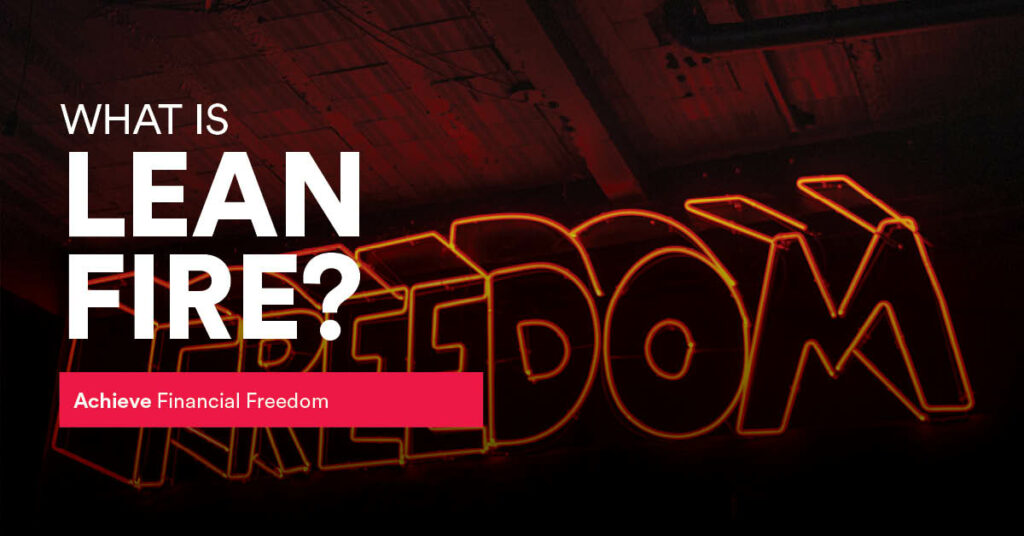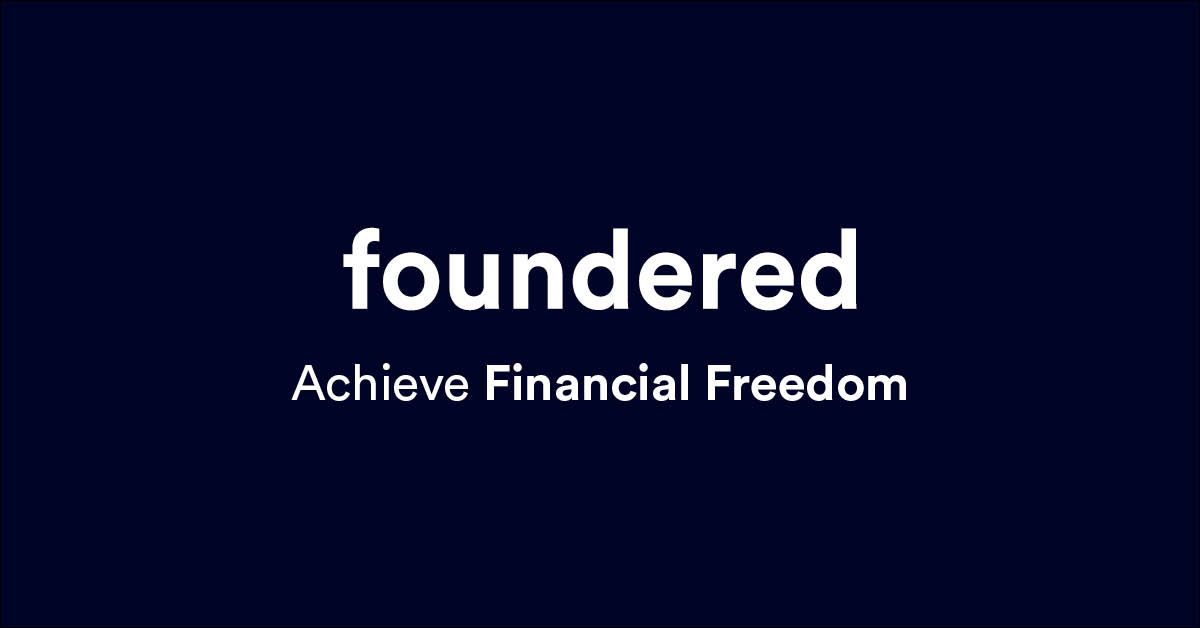Lean FIRE is often the most common mental image conjured up when people think about financial independence. It is also the most misunderstood, with some people believing that living frugally means a life of deprivation. And they couldn’t be more wrong. For many, a minimal or frugal life is incredibly rewarding and a choice they have willfully made for their own personal reasons.
When it comes to FIRE, your path and destination are wholly unique. They are based on your personal wants, needs and ultimately the cost that it will take to support these indefinitely. However, if we consider the types of FIRE to be a journey, Lean FIRE is the first and in my opinion, the most important stop.
Achieving Lean FIRE means that you have covered your most basic living expenses including food, transportation, clothing and shelter.
Lean FIRE is the frugal path to financial independence and many choose to cut their expenses to an extreme level. They often do this by living in a van or tiny home, by moving to a lower-cost-of-living area or indeed, moving across the world to a lower-cost country.
By keeping your costs minimal, Lean FIRE helps you accumulate wealth quicker, and if you maintain this level of spending over the long term, it becomes much more sustainable.
What is FIRE?
The Financial Independence Retire Early (FIRE) movement is growing in popularity across the world, with a huge number of people choosing to forgo a 40 or 50-year working life in favour of saving and investing aggressively to shorten their career into a 10 or 20-year timeframe. Yes, you can retire in only 10 years, with enough effort and focus. That said, it did take me 13 years from start to finish and I tried pretty hard.
If you want to learn how to retire early in your 40s, just like I did. Head back to the top of the page and sign up for my free mini course and weekly newsletters, where I take 13 years of knowledge and put that into a robust but easy-to-follow 10-day course.
In this article, we cover Lean FIRE, however, there are 6 different types or levels of FIRE that you might strive to achieve. In my coming videos, I will cover all of these including Barista FIRE, Traditional FIRE, Coast FIRE, Chubby FIRE or Fat FIRE. Consider each of these early retirement types as a scale, you can slide up or down. The only difference between each of them is how much you spend.
What is Lean FIRE?
I regard Lean FIRE as the first milestone on the path of financial independence. While it isn’t for everyone, lean fire embraces minimalism and frugality, where you reduce your costs and expenses to a level where the essential spending is met, but little else.
I was first introduced to the concept of Lean FIRE in 2010 when I read Jacob Lund Fisker’s book, Early Retirement Extreme. Jacob lived frugally on only $7,000 per year and this allowed him to retire at the early age 30. It is important to note, that while Jacob lived a quiet life, it was no less rewarding. It’s true that he didn’t have international travel in his budget, or a new car every year, but he made smart financial choices through simple living and increased self-reliance, which allowed him to exit the workplace very early.
Financial independence is unique for each and every person who is striving to achieve it. Your journey and destination are personal to you.
Practicing frugality, and embracing life with less, can lead to a more meaningful and happier life, away from the distractions of modern-day living. Lean FIRE may mean that you can only afford the essentials in life, but some would argue that this is more than enough.
There are some people reading this article in horror, and could not comprehend living such an existence. However, there will also be others who would fully embrace a minimal and frugal existence, if it meant they could stop working tomorrow.
Personally, lean fire isn’t for me. However, when choosing to pursue financial independence, I definitely gave consideration to significantly reducing my cost of living. By budgeting extensively, I credit this to changing my attitude, where I only spend money on the things that truly bring me value and this was the catalyst for my own journey towards FIRE.
How much do you need to Lean FIRE?
How much you need to Lean FIRE really depends on how much your life costs you, or could potentially cost you in the future. Those who intend to retire early and follow a lean existence will aim to cover their basic life essentials such as food, transportation, clothing and shelter.
They will also make great efforts to reduce the costs of each of these areas to an absolute minimum.
Food
Eat cheaply, batch cooking and rarely eating out are the main tenets of keeping your food costs low. Some choose to reduce their meat intake or become vegetarian entirely. Learning to cook a wide variety of food will ensure you never get bored and eat a well-balanced but affordable diet.
Since retiring I have enjoyed cooking so much more. With time to source recipes and prepare my food, it is no longer a chore, but rather an activity I look forward to each day.
Transportation
Transport is often one of the most expensive line items in a home’s budget. Commuting to work or for pleasure can wrack up costs quickly and for little return. Many choosing to Lean FIRE will look to more sustainable transportation such as walking or biking. For longer journeys public transport is always the most affordable option.
If a car is needed in the household, an older but reliable vehicle that is fully paid off is a great way to keep your transportation costs low.
Clothing
In the age of fast fashion, you can clothe yourself incredibly cheaply. Or you can choose to shop at vintage or pre-loved stores for affordable and often more durable clothing. Dressing well for less has never been more accessible than today.
Shelter
It would be unusable for those focused on Lean FIRE to purchase “too much home” for their needs. Instead, they are more likely to look to minimise their footprint. Apartments, tiny homes, or indeed vans #vanlife help to reduce the cost of living both in the cost of the roof over your head and the utilities to keep it heated and in light.
Budget
To understand how much you need to Lean FIRE, you need to know what your essential costs are. Budgeting is the cornerstone of any financial plan and whether you want to Lean FIRE or Fat FIRE, you will never be able to do so if you spend more than you earn.
Step 1 – Look at your previous spending habits
Today is the first day of the rest of your life. You have decided to make changes and that’s a great thing. Your previous spending habits may not be something you are proud of, but they are the past and they will not define your future.
We do however need to know where we are starting from. In a Google Sheet or other spreadsheet, detail all of your expenses from the previous month. Determine whether or not each line item is discretionary or essential. Be ruthless. If it hit the fan tomorrow and you had to cut back on all but essential items, what would these be? I’ll give you a hint, I’ve mentioned them previously.
Tallying up the costs of your essential items will give you a decent indication of what your Lean FIRE budget could be. It won’t be fully accurate as it is only a reflection of the past month, where some bills such as insurance or council tax may be paid annually. Give consideration to those costs also, if they are applicable.
Step 2 – Set and follow your Lean FIRE budget
It’s important to note that a budget is forward-looking. When we set our Lean FIRE budget, this is what we expect to spend over the next month or year. Knowing that you are able to live and maintain this spending level over the rest of your life is key to knowing how much you need to Lean FIRE.
The 4% rule
The 4% rule comes from the 1998 Trinity Study, which attempted to determine “safe withdrawal rates” from retirement portfolios. Knowing our annual budget, we can determine the total level of money we will need to have invested, which will allow us to withdraw that sum from our retirement funds each year, indefinitely.
I will add the caveat that I personally think the 4% rule is too liberal a withdrawal rate for 2 main reasons. The study was conducted in the USA, not here in the UK and secondly, for extremely early retirees, the length of time drawing from investments would suggest a need for a more prudent approach.
With that said, when I was starting on my own journey towards financial independence, I did use the 4% rule and I even considering the above points, I do suggest people use it as the basis of their initial calculations for FIRE.
Assuming the 4% rule, we would therefore need 25x our annual budget invested in stocks to achieve our Lean FIRE goal.
Example Lean FIRE budget – £15,000 x 25 = £375,000
How long will it take me to save for Lean FIRE?
If you are earning £30,000 and you are living on £15,000 per year, while investing your remaining income, then you could retire in just over 14 years.
The table here shows the deposits and interest accrued over a 15-year period. This example assumes your invested money receives an average growth of 8.5% per year and a savings rate of 50%.
How to achieve Lean FIRE
Reduce expenses
Lean FIRE is achieved when your investments total 25x your basic living expenses. Reducing your expenses or increasing your savings rate and investing your surplus money are the 2 core ways to achieve Lean FIRE.
For every £1 you remove from your expenses, you will need £25 less invested
Savings rate and rate of return
The speed at which you achieve Lean FIRE comes from 2 primary factors. Your savings rate percentage) and the rate of return.
The more you can save and invest as a percentage of your income makes a huge difference to the length of time it takes you to achieve FIRE.
In the above example, we assumed a 50% savings rate. Income £30,000 and your expenses being £15,000. It took 14 years to reach your FIRE number.
But if you earned £30,000 and saved/invested 10% each year, then our FIRE number would be £27,000 x 25 = £675,000 and it would take us 36 years to achieve this using the same rate of return at 8.5%.
In addition to our savings rate, we also need to consider the rate of return on our investments. In the above examples I used 8.5% return, but if we based this on the Lifestrategy 100% Accumulation fund average return since inception in 2011 (As at date 31 Mar 2023), then you could assume 10.96% average return. Taking our £675,000 as the total to FIRE, we could now achieve this in year 30.
Benefits of Lean FIRE
Achieving Lean FIRE will allow you to live life knowing that your most basic needs and expenses are fully met. With a smaller sum needed to achieve Lean FIRE, saving and investing to reach this goal is more achievable.
By stripping back the excess and leading a life of minimalism, many people report a happier yet simpler life. If consumerism has a grasp on you, then breaking this cycle can sometimes help you to refocus on the things you value and are willing to put your time, money and focus into.
Ditching the car in favour of walking or cycling has huge benefits when it comes to your own personal fitness.
Health professionals around the world are now citing that sitting is the new smoking. Getting up and getting active will not only help you maintain a healthier lifestyle but may help you live a better life also.
Workplace stress is one of the major influences in our personal well-being. By quitting the workforce you can remove stress from the working world. It won’t completely remove stress from your life, but I can tell you with honesty, that it goes a long way.
Disadvantages of Lean FIRE
Lean FIRE is not for everyone. While the advantages and benefits are significant, it is not without its own challenges and risks.
This past 18 months, the Cost of Living crisis that has gripped the UK and Ireland, has been weathered by most. However, if you are living on a Lean FIRE budget, you might not have any room in your budget to manage the increase in costs across the board. You may not have any room to reduce your expenses further.
These inflationary challenges could easily put you into a situation where your most basic needs are no longer met.
When saving for Lean FIRE, your goal is to save and invest enough to meet your basic living expenses. When you consider that the 4% rule is based on keeping your investments invested, this means you will be more vulnerable to swings in the value of your investments. A significant and prolonged market decline, especially in the early years of your post-Lean FIRE retirement, could wipe out your savings and investments.
Lean FIRE also assumes that your life will stay relatively unchanged and that your life costs will only increase through inflation and not due to lifestyle creep or life changes.
Adding a child or children to your Lean FIRE costs may be out of the question entirely and if the decision to have children lies with your finances, then your current Lean FIRE budget may not be able to afford that.
Of course, the negatives and drawbacks of Lean FIRE could be mitigated by just earning more money. In the worst-case scenarios, that’s exactly what many in the Lean FIRE cohort are prepared to do. The horrors…..
Celebrate the success
It’s easy to look at Lean FIRE and think that’s not for you. But Lean FIRE is a big deal. In achieving this you have accomplished so much. It provides a significant state of financial security and peace of mind. For many, this represents a fulfilling life of simplicity and minimalism.
But it may also be the starting point for the rest of your FIRE journey. When you have guaranteed your financial security, would you feel comfortable quitting your job? Might you take an extended career break? Could you take a mini mid-life retirement? Lean FIRE might be the end of your journey, but it might also be the start.
As someone who has achieved Lean FIRE, you could consider continuing to work, but leaving your investments to grow over the next 10, 15 or 20 years. In this instance, you would then be progressing towards the definition of Coast FIRE.
Or if you decided to quit your current job and partially fund your life with a lower-paid or lower-stress job, this would be a progression into the Barista FIRE stage.
What is important to remember is that financial independence retire early is a journey. You can start when you want, stop when you want and if you don’t like your current location, you can hop back on. There is no right or wrong answer, only what is right for you.


